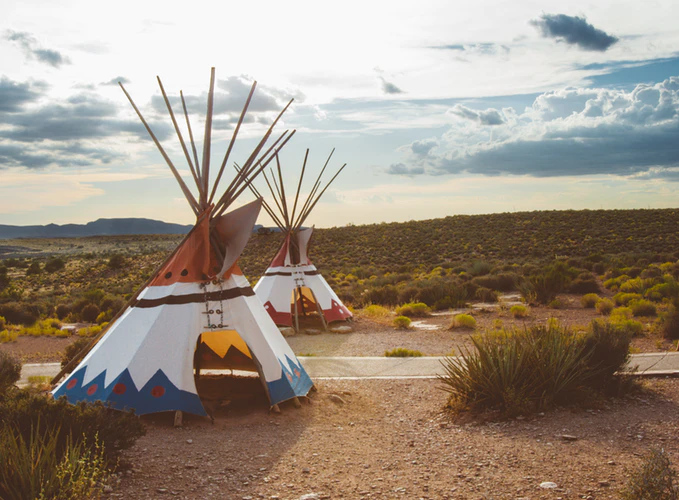
The negative repercussions of climate change are becoming increasingly severe with each passing month. And some areas are more strongly affected than others — for instance, the Gulf Coast of southern Louisiana is essentially eroding into the sea. Yet that’s only a small part of the overall picture, and potential losses stemming from climate change span well beyond our natural spaces.
Several Native American tribes claim that their culture is eroding alongside Louisiana’s coastline. The issue of climate change is so concerning, in fact, that four coastal Louisiana tribes recently filed a formal complaint with the United Nations on the matter. The complaint alleges that the U.S. government has violated the human rights of the affected tribes by “failing to take action on climate change.”
Shirell Parfait-Dardar, chief of the Grand Caillou and Dulac Band of Biloxi-Chitimacha-Choctaw Indians, is an outspoken advocate who helped file the U.N. complaint, which is also supported by the Native Village of Kivalina tribe in Alaska. “We’re not only losing our homeland,” Parfait-Dardar told the Associated Press in January. “We lose so much more than that. We lose our culture. We lose our identity.”
Unfortunately, the loss of Native identity and culture is a problem that spans across history. Colonization, imperialism, deforestation, and capitalism have ravaged indigenous communities and their lands for centuries, adversely affecting their culture in return. Today, as climate change joins the mix, can anything be done to mend the wounds of Native Nations and the surrounding environment?
Of Pipelines and Protests
The U.S. government has helped perpetuate the oppression of Americans since before the country was founded, and ignoring coastal erosion is only one of its numerous environmental crimes. And the recent complaint filed with the U.N. was not the first time that indigenous tribes have sought recourse for civil rights violations.
In September 2018, two tribes (based in Montana and South Dakota) filed a lawsuit against the Trump administration that sought to block the construction of the Keystone XL pipeline. According to the project proposal, the 1,204-mile pipeline is set to run from Alberta to Nebraska, passing through a number of tribal lands. Further, the pipeline would cross historic and sacred sites, carrying with it the threat of contamination via ruptured pipes or oil spills.
That threat, unfortunately, became reality more than a year after the Keystone XL lawsuit was filed. About 9,120 barrels of crude oil spilled onto North Dakota grasslands in October 2019, resulting in the immediate, yet temporary, shutdown of the pipeline. Native tribes and other environmental activists continue to protest the pipeline project and others like it, including the Bayou Bridge Pipeline (BBP) in Louisiana.
If we are to see any lasting change as we work to safeguard vulnerable populations such as indigenous minorities and in turn protect the Earth. It’s important to remember that environmental issues can manifest in the form of health problems, and healthcare access is often limited among Native populations. As we can see, climate change is a multifaceted issue that exists at the intersection of environmental protection and social justice.
Making Changes at the Individual Level
Fortunately, climate-based activism can happen without the need for lawsuits and protests. No matter a tribe’s location, Native environmentalists can start small by making changes at home. For instance, we can help reduce the effects of climate change by reducing our carbon footprint and practicing energy conservation.
To improve the energy efficiency of a dwelling or storefront, there are several viable methods to follow. Start by minimizing electricity waste and unplugging so-called energy “vampires,” including unused power strips. It’s also a good idea to embrace the nuances of the local climate, and make accommodations that work in tandem with the weather, rather than against it.
Finally, consider the benefits of installing an alternative power system. Harnessing solar and/or wind energy allows homeowners to almost completely offset their household’s carbon emissions. Alternative energy systems also provide autonomy, allowing homeowners to break ties with expensive energy companies.
The Power of Renewables
Renewable energy promises to be a game-changer when it comes to fighting climate change. Of course, Native nations are already at the forefront of the solar energy revolution and have been for years.
For instance, the desert Southwest has long been a hotbed of potential for solar energy, and its Native tribes have taken notice. In 2017, Nevada’s Moapa Band of Paiutes built the first utility-scale solar project erected on tribal land, which is powerful enough to provide power to approximately 111,000 homes.
While large-scale solar systems provide a cleaner, green alternative to nonrenewable energy sources like fossil fuels, there is an additional environmental impact to consider. Solar farms require massive tracts of land, and they should be placed in a mindful manner, taking the surrounding ecosystem and local Native communities into consideration.
Final Thoughts
In regards to environmental issues, marginalized communities usually experience the brunt of human-caused problems, and climate change is no exception. Harnessing alternative energy sources and ensuring that Native voices are heard may provide a real solution to the climate crisis and desecration of the Earth.
You may also like
The Anatomy of Earth-Sheltered Homes
Gardening Tips That Save You Green
